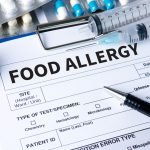If you suffer from allergies, you’re not alone. In fact, according to the National Institute of Allergy and Infectious Diseases (NIAID), more than 50 million people have allergic diseases, making them the sixth-leading cause of chronic illness in the USA.
The 2006 Spring Allergy season is already being billed as the worst in years. The mild wet winter seen this year in much of the US is being blamed for the early intense spring allergy season. If you’ve been paying attention to the media over the past week, you have no doubt seen some of the numerous reports jumping on the Asthma and Allergy Foundation of America’s 2006 publishing of their list of Allergy Capitals.
According to the Foundation:
The list is based on the levels of grass/tree/weed pollen and mold spores in the air, the medication usage per patient, and the number of Board Certified allergists per patient in each metro area. The results for each metro area are then compared and ranked.
What you don’t learn in most (if any) of these news reports is that the whole program is supported by Procter & Gamble, makers of Febreze Allergen Reducer® and Swiffer® Dusters and Schering-Plough, makers of Nasonex® Nasal Spray, and Pollen.com, a division of Surveillance Data, Inc. Is this a bad thing? Not necessarily — but it does give a certain slant to the recommended solutions that accompany these articles (more on that later).
So are the pollen counts really skyrocketing? Indeed. To give you an idea, let’s look at Atlanta. ABC news reported that in early April of this year, Atlanta recorded the second highest pollen count since they started recording them in 1995. Pull up the pollen counts for the Atlanta area for April 2006, and they are nothing short of staggering. For example, a count over 120 is considered extremely high — the highest rating given. The pollen count on April 3rd, 2006 was 5,861. (The highest count so far ever recorded was 6013 in 4/12/99.) And if you’re wondering how Atlanta ranked on “The List” with such staggering numbers — it only managed a measly 28th.
The bottom line is that American cities are climbing up the allergy ladder, with a number of US cities falling behind Shanghai when it comes to quality of life. (Something our readers in China can crow about.) And conditions are predicted to get worse. As Dr. Christopher C. Randolph, allergist at the Center for Allergy & Immunology in Waterbury, Conn. points out, “You’ll have grasses in June, then weeds in August and September.”
The best advice medical authorities can offer is avoid the worst cities and shuttle through your medications until you find one that blocks the symptoms. Hardly inspiring. But let’s look at some of the common “medication” options, and remember, I told you the rankings were sponsored by Procter and Gamble and Schering-Plough.
Common Treatment Options
Antihistamines and Decongestants
The two major classes of medications for treating allergies are antihistamines and decongestants. Antihistamines help relieve sneezing, itching and runny nose. They work best if you take them routinely during the allergy season rather than waiting until you feel miserable. Decongestants, on the other hand, work by drying up nasal passages after the fact, and are used on an as needed basis for short periods of time only.
- Antihistamines may offer relief from sneezing, itching and runny nose but they need to be taken routinely in order to be effective. In other words, they are less effective if you wait until your symptoms get bad. If taken correctly, they can reduce symptoms by 50 to 80 percent yet rarely relieve all symptoms.
- Decongestants come as topical eye and nose drops and sprays and as oral tablets and liquid. They narrow blood vessels and reduce blood flow in the affected area, which helps clear congestion and improve breathing. The nose drops and sprays should be used for no more than three days to avoid rebound swelling in the nose. Again, as with antihistamines, decongestants do nothing to resolve the underlying problem. They merely suppress symptoms.
Allergy shots
Allergen immunotherapy works like a vaccine. Your body responds to the injected amounts of a particular allergen, given in gradually increasing doses, by developing an immunity or tolerance to the allergen(s). As a result of these immune changes, immunotherapy can lead to decreased, minimal or no allergy symptoms when you are exposed to the allergen(s) included in the allergy vaccine. There generally are two phases to immunotherapy: a build-up phase and a maintenance phase.
While allergy shots go more to the cause than antihistamines and decongestants, the process is not inexpensive and the effectiveness of this treatment option is different for each person, and some people fail to respond at all.
A Different View: Detoxing
All that said; let’s look at a different approach — eliminating the cause of allergies, and therefore the need for medication of any kind.
Understand there simply is no magic pill that does anything more than cover up symptoms. There is, however, an effective approach that empowers your body to throw off allergies and keep them from returning. The approach is simple and follows the principles of the Baseline of Health® as outlined in Chapter 2 of Lessons from the Miracle Doctors. (If you haven’t already done so, you can download a free copy at www.jonbarron.org/detox/book-free-lessons-miracle-doctors.)
For our purposes, as in the book, I will again use a simple X-Y chart to represent the state of health. The Y axis represents the level of your health. And the X axis represents your body’s load of allergens.
Personal Health Line
That’s the red line in the chart above. It moves up and down constantly (always above the line of symptoms it is hoped) and reflects where your health stands at any moment in time. In the above chart, it is tracking only one health factor: your exposure to allergens.
The Line of Optimal Health
In a perfect world, your personal level of health line would match the Line of Optimal Health — totally free of allergens. In reality, that’s not achievable. So what we try to do is keep everything as close to Optimum Health as possible.
The Line of Symptoms
The more your body is loaded up with allergens the closer it sits to the line of symptoms so that eventually it only takes a little exposure to dust, pet dander, pollen, etc. to throw you over the line and start manifesting symptoms.
Anaphylactic Shock & Death
If your personal health line crosses this line, the result is anaphylactic shock and in some cases death. Anaphylactic shock is a life threatening allergic reaction characterized by a swelling of body tissues (including the throat) and a sudden decline in blood pressure. Symptoms can include hives, swelling (especially of the lips and face), difficulty breathing (either because of swelling in the throat or an asthmatic reaction), vomiting, diarrhea, cramping and a fall in blood pressure.
My point — your tissue and blood are being exposed to allergens every day:
- Pollen
- Dander
- Foods
- Food additives
- Chemicals
- Etc.
As allergen levels build up in the blood (and in your soft tissue, as in the case of Circulating Immune Complexes), over time, crossing the line of symptoms becomes more and more of a threat. So let’s look at a holistic treatment option.
The Baseline of Health® Approach to Allergies
As always, it is best to deal with the cause rather than just suppressing the symptoms. There are several factors that trigger allergies, but in the end, getting rid of allergies primarily depends on eliminating the key cause — foreign proteins in the blood. If they are allowed to build up, it takes only a mild stimulus (pollen, for example) to throw your body across the line of symptoms and produce problems that can range from mild itching and runny nose to an asthmatic attack.
The key to stopping allergies is to clean allergens out of your soft tissue and blood so that your personal health line sits far away from the line of symptoms. That way, exposure to pollen, dander, etc. are not enough to move you over the line of symptoms. This is done in several ways:
Eat smart
Virtually everyone has undiagnosed food allergies that affect their baseline of health, weighing it down closer and closer to the line of symptoms — not to mention the line of anaphylactic shock and death.
For our purposes, eating smart means minimizing exposure to the most common food allergens — the big three being wheat, corn, and dairy (with dairy taking top honors).
Dairy
Incompletely digested large dairy proteins, such as casein, become antigens (substances that provoke immune reactions) once they enter the bloodstream in individuals who are sensitive to them. Plus, the milk you buy in the store is not raw milk. Heating the milk to pasteurize it “denatures” dairy proteins making some of them much more allergenic than they are in their natural state. Consider that many cases of asthma and sinus infections are reported to be relieved, and even eliminated, by simply cutting out dairy.
If you must drink milk, be smart about your choices:
- Raw organic, if you can find it, avoids many of the problems — but presents health issues of its own unless you can be sure of the source.
- Organic pasteurized is better than non-organic, but because of the heat used in pasteurization it presents significantly higher allergy problems than raw.
I do not recommend non-organic, pasteurized, homogenized dairy products under any circumstances. - And while whey eliminates the casein problem, it still contains the two main allergenic proteins, alpha-lactalbumin and beta-lactoglobulin — the two most heat sensitive proteins.
- Soy milk, of course, is not an effective alternative, since it is high in allergens itself, blocks the absorption of important minerals such as calcium, and contains high levels of phytoestrogens, which although beneficial in moderate amounts, can be counter-productive in large amounts — particularly for children.
For more information on dairy, check out Dairy Diet Delusion.
And in addition to wheat, corn, dairy, and soy, other standard food allergens include:
- Eggs
- Food additives such as MSG, food dyes and preservatives
- Processed foods
- Plus any foods you know you are specifically allergic to
Breathe Smart
Indoor allergens include dust mite droppings, animal dander, cockroach droppings, and indoor molds — not to mention “unnatural” allergens such as tobacco smoke, aerosols, paint, perfumes, smog, and cleaning products or other strong odors or fumes. If the allergens are not eliminated, constant exposure leads to a build up of allergens in the body that pushes your health line across the line of symptoms 24/7, leading to chronic health problems.
The trick to fighting indoor allergens is that there are different measures for each allergen so you need to determine what allergens are pushing you over the line (this can be done by working with an allergist/immunologist). The American Academy of Allergy Asthma & Immunology offers tips for fighting indoor allergens to help you distance yourself from the line of symptoms.
It’s also worth investing in an effective cleaner/ionizer to scrub the air in your house — and make sure you clean it frequently.
Avoid and eliminate Circulating Immune Complexes (CIC’s)
Circulating Immune Complexes (CIC’s) may be one of the single biggest allergy triggers. What are they?
Large protein molecules (such as those found in wheat, corn, and dairy) that are only partially digested in the small intestine are absorbed into the bloodstream. Once in the bloodstream, the immune system treats them as invaders provoking an immune reaction. Antibodies couple with these foreign protein invaders to form circulating immune complexes (CIC’s). In a healthy person, these CIC’s may be neutralized in the lymphatic system. But if the immune system is in any way compromised, or if their build up is too massive, CIC’s accumulate in the blood, where they initiate an “allergic” reaction. As the number of CIC’s builds, the kidneys max out and can no longer excrete all of them, so they begin to accumulate in the body’s soft tissues, causing inflammation — and even triggering autoimmune disorders (since the body’s immune system starts attacking the tissue that contains the CIC’s).
Proteolytic (protein digesting) enzymes produced by the pancreas (or taken in supplements) break down CIC’s in the bloodstream and soft tissue so that they can pass through the kidneys for excretion. Reducing the number of CIC’s goes a long way in moving you toward your optimal health line and away from the line of symptoms. Eating digestive enzymes with every meal and taking Proteolytic Enzymes between meals can produce dramatic changes in your health.
Clean out your colon
Have you ever noticed how just having a good bowel movement can clean up a stuffy nose in a matter of minutes?
It’s quite simple. Your bowel is not an impervious Teflon barrier. It is more like a porous membrane that reclaims water from your stools (which is why stools get harder and dryer the longer they sit in the bowel) and shuttles that water back into your body. It also means that allergens are readily drawn into the body along with the water. The longer waste sits in the bowel, the more toxins are absorbed into your body along with the water. Remove the waste, and instant relief.
Keep the bowel clean long term, and it once again functions as a pathway out of the body for stored toxins — rather than an entry point in for new toxins. That’s twice the benefit.
Bottom line: do two colon cleanses a year as part of a regular maintenance program.
Do a liver detox
Do a liver detox twice a year so that your liver can more efficiently eliminate toxins from the bloodstream. Since your liver is your body’s primary filter, cleansing your liver is imperative in order to not only rid it of existing allergen build up in its own tissue but to allow for it to optimally perform its filtering functions and remove allergens from your blood. Many naturopaths believe that allergies are merely a symptom of an unhealthy liver.
To give you an idea of just how related the liver is to allergic reactions consider that in the January 2003 issue of the Archives of Internal Medicine a clinical observation of the passive transfer of nut allergy after a liver transplant was reported. The case involved a 60-year-old man who received a liver transplant from a 15-year-old boy. Twenty-five days after receiving the transplant, the man, who previously had no history of nut allergy, curiously experienced an anaphylactic reaction after eating a meal containing cashews. In fact the 15-year-old boy had died of anaphylaxis after eating a peanut. Even more telling — post transplantation skin prick test results on the liver recipient were positive for peanut, cashew nut, and sesame seed — with the donor having had allergen IgE antibodies to the same 3 allergens.
Use immunomodulators
Immunomodulators are nutraceuticals that can regulate your immune system — boosting a weak system or calming down an overactive system. By using immunomodulators such as L-carnosine and Cetyl myristoleate (CMO), you can retrain the immune system to not overreact.
Use a full-spectrum antioxidant that contains quercetin
You should use a full spectrum antioxidant that contains high levels of quercetin, which stabilizes the membranes of immune cells (basophils and mast cells) so they no longer dump inflammatories into the bloodstream. Quercetin is one of the class of antioxidants known as bioflavonoids. A prime role of quercetin is to protect the integrity of cell walls from free radical damage. In addition, quercetin prevents the release of histamines into the bloodstream, thereby helping to control food and pollen allergies.
Conclusion
At this time of year, as the blooming trees and flowers push you across the line of symptoms and you begin to realize that medical treatment options just don’t cut it, it’s nice to know that there is an approach that is designed to distance you from the line of allergy symptoms and move you closer to the line of optimal health so it simply won’t matter what city you live in — even Shanghai. Once again the bottom line is:
- Eat smart
- Breathe smart
- Avoid and eliminate Circulating Immune Complexes (CIC’s)
- Do two colon cleanses a year
- Do two liver detoxes a year
- Use Immunomodulators
- And use a full-spectrum antioxidant










